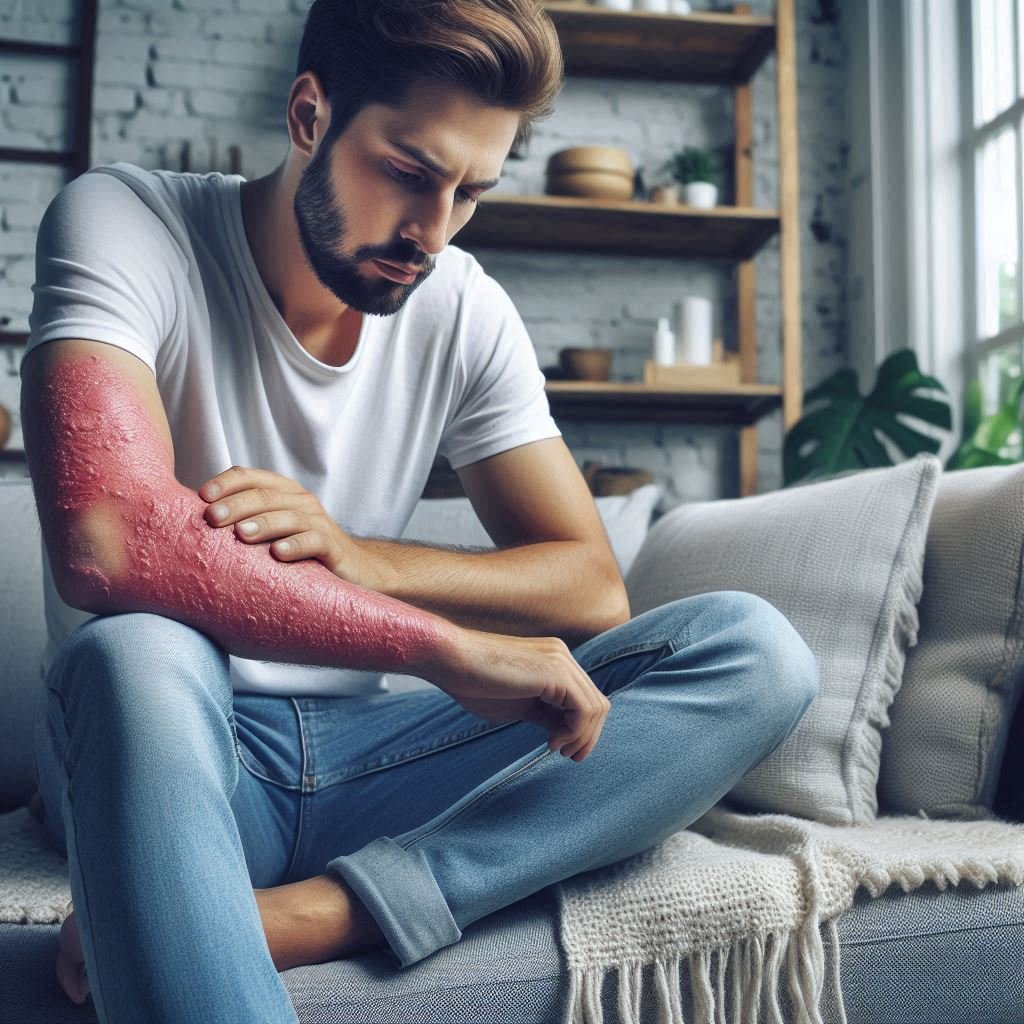
Eczema, also referred to as atopic dermatitis, is an inflammation (reddening and swelling) of the skin which is very itchy. The severity of the disease can vary. In mild forms the skin is dry, hot and itchy, whilst in more severe forms the skin can become broken, raw and bleeding. In the United Kingdom, up to one fifth of all children of school age have eczema, along with about one in twelve of the adult population. The most common type of eczema is atopic dermatitis. It is an allergic condition that makes your skin dry and itchy. It is most common in babies and children. Factors that can cause eczema include other diseases, irritating substances, allergies and your genetic makeup. Some people who have eczema scratch their skin so much it becomes almost leathery in texture. Others find that their skin becomes extremely dry and scaly. Eczema will permanently resolve by age three in about half of affected infants. In others, the condition tends to recur throughout life. Most affected individuals have their first episode before age 5 years.
Eczema is not contagious. About 1-2 percent of adults have eczema, and as many as 20 percent of children are affected. Eczema can occur on just about any part of the body; however, in infants, eczema typically occurs on the forehead, cheeks, forearms, legs, scalp, and neck. Sometimes the itching will start before the rash appears, but when it does the rash most commonly occurs on the face, knees, hands or feet. It may also affect other areas as well. Atopic eczema affects approximately 15-20% of young children in the UK. Atopic eczema clears up in approximately 70% of children by the time they reach their teens and in many it largely clears up by 4-5 years of age. If it persists into adult life, it usually affects the body creases, the face and hands. Soap removes dirt but also removes natural oils from the skin; making the skin dry, irritated and itchy. Try not to scratch the irritated area on your skin even if it itches.
Treatment of weeping lesions may include soothing moisturizers, mild soaps, or wet dressing. Moisturizing gloves can be worn while sleeping. Emollient bath oils should be added to bath water and then suitable agents applied after patting the skin dry. Chronic thickened areas may be treated with ointments or creams that contain tar compounds, corticosteroids (medium to very high potency), and ingredients that lubricate or soften the skin. Mild anti-itch lotions or topical corticosteroids (low potency) may soothe less severe or healing areas, or dry scaly lesions. Systemic corticosteroids may be prescribed to reduce inflammation in some severe cases. Light therapy using ultraviolet light can help control eczema. UVA is mostly used, but UVB and Narrow Band UVB are also used. Ultraviolet light exposure carries its own risks, particularly eventual skin cancer from exposure. Tea-tree oil in a gel or diluted form has good antiseptic and antibacterial effects, and is helpful in calming down inflammation. Non-conventional medical approaches include traditional herbal medicine and others.
Eczema Treatment Tips
1. Emollients are necessary to reduce water loss from the skin, preventing the dryness normally associated with eczema.
2. Steroids act by reducing inflammation and are used in most types of eczema.
3. Ultra Violet light treatment and stronger medication may be considered for very severe eczema.
4. Avoid substances that stress your skin.
5. Diet restrictions and chemical skin-drying agents may also be offered, but their success is controversial.
6. Use warm water with mild soaps or nonsoap cleansers when bathing your child.
7. Avoid using scented soaps.
8. Apply cool compresses on the irritated areas of your child’s skin to ease itching.
9. Keep your child’s fingernails short to minimize any skin damage caused by scratching.
10. Try having your child wear comfortable, light gloves to bed if scratching at night is a problem.




